Proof of intentional killing is extremely rare among prehistoric hunter-gatherers, but the evidence found at Nataruk by Lake Turkana is clear-cut
Ruth Schuster
Source - http://www.haaretz.com/jewish/archaeology/1.698422
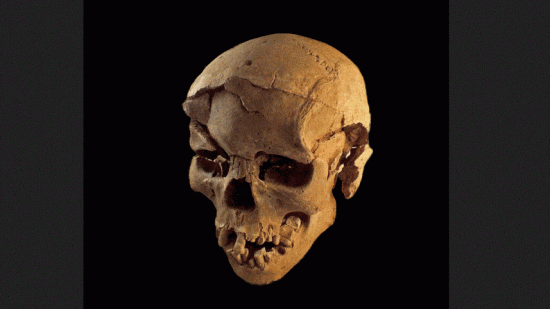 Skull of man shows definite signs of extreme violence: Note lesions on front, above the eye, and left - Marta Mirazon Lahr
Skull of man shows definite signs of extreme violence: Note lesions on front, above the eye, and left - Marta Mirazon Lahr
Skeletons dating to 10,000 years ago, bearing marks of a violent death and possibly bondage, provides fresh evidence that prehistoric hunter-gatherers did not necessarily live in bonhomie. Disturbingly, two of the 12 people found by Lake Turkana, Kenya were not marked by signs of violence but seem to have died with their hands bound, a team of archaeologists reported in Nature on Wednesday.
We know prehistoric humans were armed to the teeth, but it's an open question against who they wielded their stone knives and spears – animals, or each other. "Evidence for inter-group violence among prehistoric hunter-gatherers is extremely rare," writes the team led by Marta Mirazón Lahr of Britain's Cambridge University.
Yet she found some. She and her colleagues discovered the remains of at Nataruk, a site near the edge of Lake Turkana, in 2012. Among them were ten bodies with clear signs of lethal traumas.
One man had been bashed on the head twice, above the right eye and on the left of his skull, smashing the bone (see the top picture).
Another had a small obsidian knife embedded in his skull, but what killed him was probably a completely different weapon, which was used to crush his face. Wounds found on the head and neck bones of others could have been caused by arrows, which indicates that the attackers were distant, suggesting inter-group conflict (as opposed to violence within the family – that wouldn't likely involve arrows). Some suffered broken knee and hand bones.
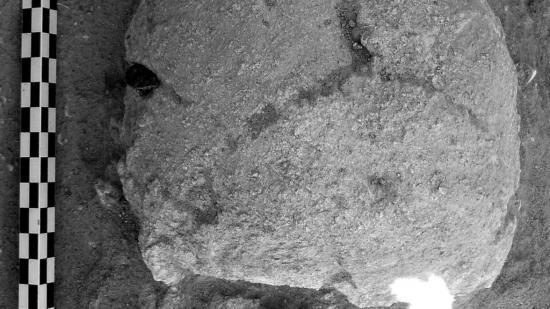 Small projectile embedded in the left of this skull found at Nataruk - Marta Mirazón Lahr
Small projectile embedded in the left of this skull found at Nataruk - Marta Mirazón Lahr
One body was of a woman in advanced pregnancy: the position of her body and limbs suggest she had her feet and hands bound.
Stone tools were found too, 131 with the bodies and hundreds more right around them.
These ancient people, whom the authors date to 9,500–10,500 years ago, had not been lovingly buried: the bodies were not found in any orderly orientation or manner. Six of the dead were children.
Nataruk
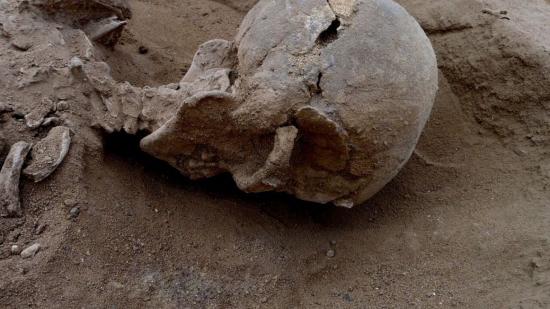
The skull shows signs of lethal trauma - Marta Mirazón Lahr
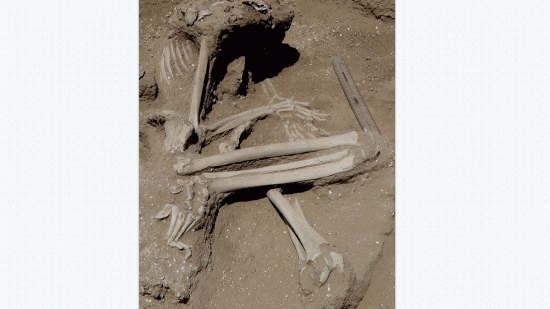
The bodies were not laid out in any orderly fashion that might have indicated a ceremonious burial - Marta Mirazón Lahr
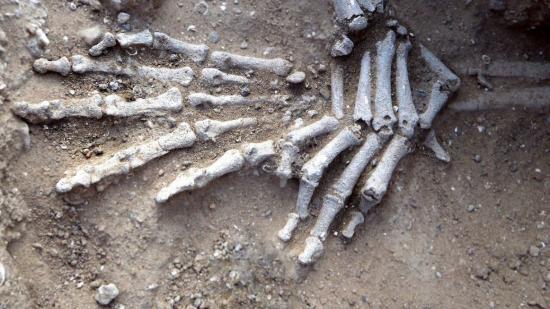
The position of the hands indicates that the person may have died with hands bound - Marta Mirazón Lahr
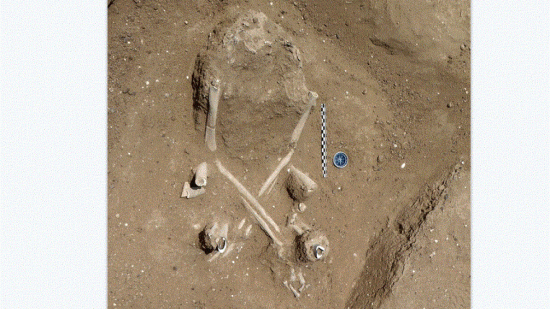
Woman, heavily pregnant at the time of death, whose hands and feet may have been bound - Marta Mirazón Lahr
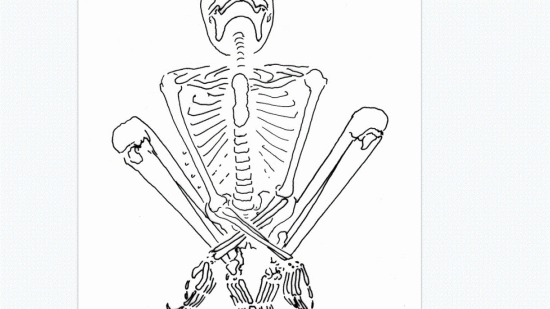
Sketch of the position of a female body, heavily pregnant at the time of death, whose hands and feet may have been bound - Marta Mirazón Lahr
At least, observe the scientists, there was no evidence of "trophy-taking (such as scalping)".
The Nataruk site is not the first or even the oldest evidence of actual inter-group war. In mid-2014 scientists from Bordeaux University in France reanalyzed bodies in a graveyard dating back roughly 13,000 years in today's Sudan, and concluded they had come across not only the oldest evidence of war, but racial war at that. The bodies were of two distinct types: One group involved in the ancient battles in Jebel Sahaba by the Nile River were tall with relatively short torsos, projecting features and broad noses. The other group was shorter, had longer torsos and flatter faces. There too the bodies, which included women and children, bore the marks of trauma, including apparent arrow injuries.
Who were these people?
The Turkana finds show the battle in Sudan had not been a bad-tempered blip in the history of Neolithic man. Given the violent proclivities of modern man, that's no great surprise: the only pacific primate on the planet isn't the neighbor next door, it's the bonobo. But what were these people fighting over 10,000 years ago?
Like in Sahaba, the reason for the slaughter cannot be known. Although Turkana is a fertile site, there are signs of early settlement, such as clay pottery, so one possibility is that that groups in the area were struggling over resources (food, women, animals, territory).
Or maybe they all had plenty of resources but, like modern man, had violent tendencies toward outside groups (or as the scientists put it, a "standard antagonistic response to an encounter between two social groups").
Some anthropologists prefer to believe hunter-gatherers were peaceful. If a group encountered unpleasantness, they could simply move on. Why fight if they could flee? Others suspect the opposite, with some even postulating that internecine violence, and the development of stone weapons, is exactly how prehistoric populations began to spread worldwide.
In any case, the archaeologists believe the Nataruk finds show "intentional killing" of a small band of foragers, which constitutes, they say, "unique evidence of a warfare event among hunter-gatherers in prehistory".